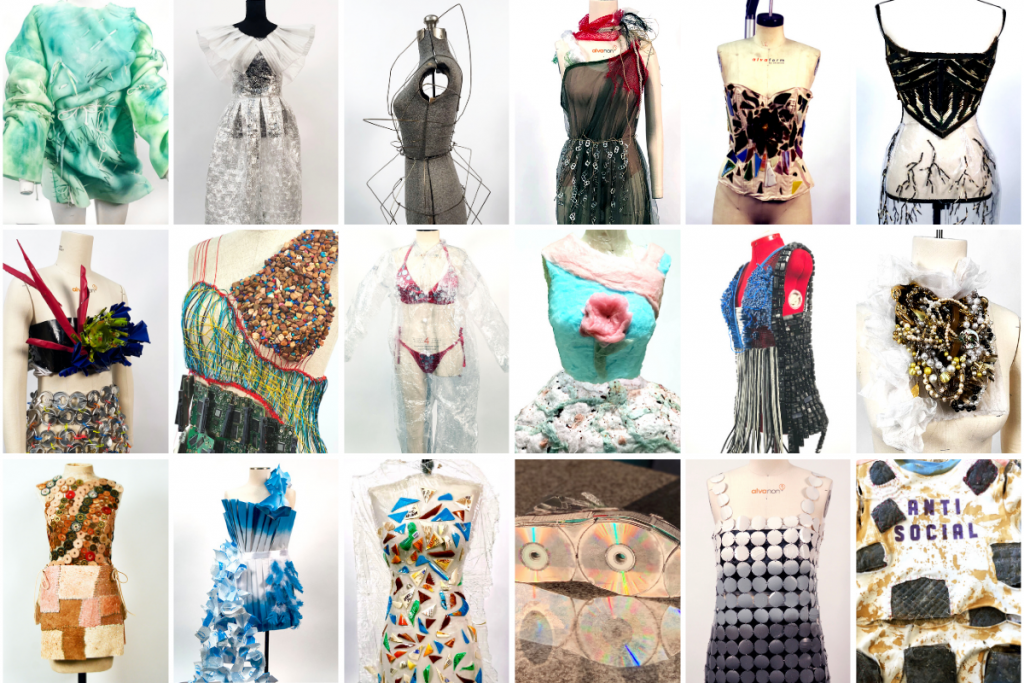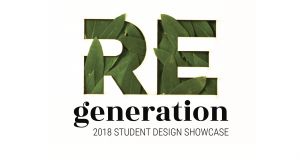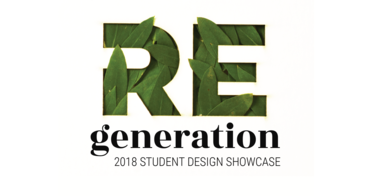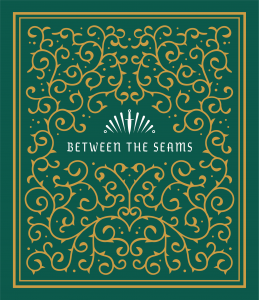During the spring semester of 2021, Weisman Art Museum Director of Public Programs and Student Engagement, Katie Covey Spanier, collaborated with Lindsey Strange, UMN College of Design Professor of Apparel Design, on a unique curriculum integration project. Students from the College of Design studied the museum’s spring exhibition, Pressing Issues: Printmaking as Social Justice in 1930s United States, and were prompted to use unconventional materials to create a unique garment that responds to pressing issues of our time. The final result? A pop-up exhibition titled, Fashioning The Future: Using Unconventional Materials to address Society’s Wicked Problems, on view at the Weisman through Sunday, May 9.
Katie sat down with Lindsey to chat about teaching apparel design during a global pandemic, what insights the designs in Fashioning the Future tell us about the Gen Z mind-state, and her thoughts on the future of the fashion industry.
Katie Covey Spanier: You have been working in the garment and textile industry for well over a decade. Can you tell us a little bit about your background and how that informs your teaching practice?
Lindsey Strange: I’ve been sewing and making things my whole life. I find great joy in clothes and the craft of garment-making! I’ve also worked in the garment industry in a variety of design roles, from costume design to fitting maternity sweaters, and have seen the environmental and social injustices of mass-producing clothes firsthand. In particular, overconsumption and the affiliated devaluing of clothing motivated me to stop making more stuff and try teaching designers to do things differently. It even motivated me to go to business school to better understand how to make a business case for sustainable design! I bring all these perspectives to my classroom. My goal is to inspire the joy of designing clothes, an understanding of the impacts of clothing production and consumption, and to instill a sense of responsibility to find creative, yet feasible solutions to those impacts.
KCS: There have been many iconic collaborations between visual artists and designers, and there is certainly a history of designers referencing famous works of art in their garments. Do you think there is a value in having your students work with museum objects in this way?
LS: Absolutely! While apparel design is a creative field, we work in an economic system that incentivizes growth and sales. It’s easy to lose sight of the cultural significance of clothing as a source of creativity, self-expression, and empowerment. Providing students an opportunity to step back and look at the world through an artist’s eyes helps them reflect and critique what is going on around them. Then, clothing design becomes a powerful medium of visual communication for them to process and share ideas with others. Even as a way to make change! Think of slogan T-shirts, or defying gender roles through dress. While most of the designs in this exhibition aren’t wearable in an every day sense, the students now have that perspective as part of their design practice and can channel it into future designs.
We also spent the beginning of this project discussing the systemic, wicked nature of these pressing issues. The students researched, journaled, and mapped out their ideas visually, and started to see how issues such as mental health, overconsumption, and environmental degradation are interconnected, complex, and will likely never be solved completely. That can be overwhelming to come to terms with. I think processing these issues through an art lens and sharing them with the public helps us realize we’re not the only ones who care. We’re in this together, and that creates community.
KCS: What has it been like to teach such a hands-on skill during the time of COVID and Zoom-based instruction?
LS: Haha, it’s HARD! In many ways, this project does adapt well to making-from-home, because the goal is to experiment and find potential in materials commonly found in the daily excess around us. I always encourage students to be resourceful, but they usually have more in-person support in our studio to problem-solve, with me and with each other. While we were able to recreate that a bit over Zoom, there were limitations: I couldn’t see or touch and understand exactly what they were doing along the way. They’re also each working with completely different mediums, so I can’t prepare hands-on demonstrations, even with a good camera set-up. A hard part of projects like this is that you just have to try stuff to see what works; you can’t think or draw your way into a solution. I mean, how do you plan to make a dress out of cotton candy? Or e-waste? Or dryer lint? Encouraging and motivating them to get started is the hardest part. But once they got going, the students’ excitement was palpable, even through a computer screen. As we reflected back on the project, they told me the circumstances forced them to be more resourceful and independent as they problem-solved with what they had. Also, while it was hard in the moment, this project ended up building their confidence to try new things, to teach themselves, and to break some of the rules. If you haven’t had a chance to watch the process video in the galleries yet, you can see them working at home and in our fabrication facilities with all their materials! It’s so inspiring and seeing the students’ process brings the projects to life!
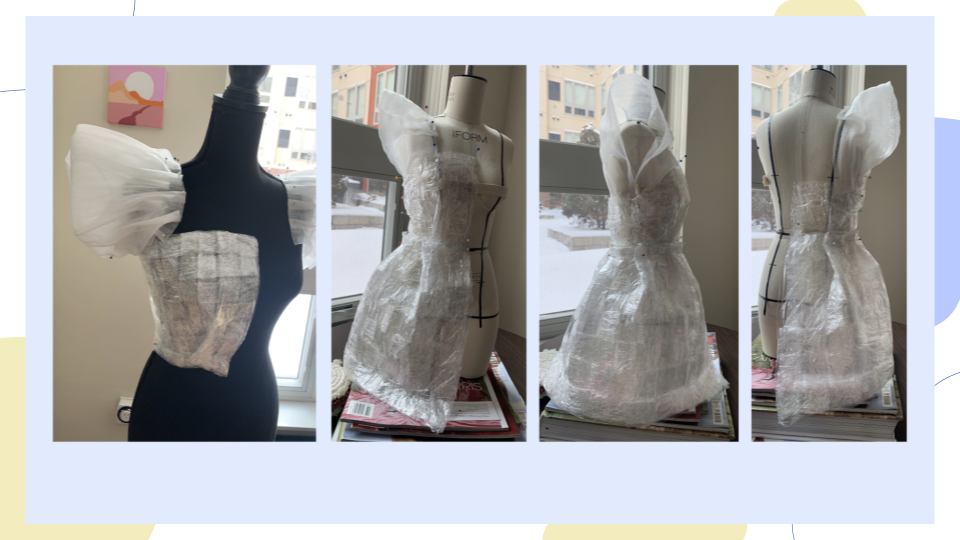
KCS: Speaking of Zoom—this last year has been dominated by the athleisure movement: lots of ‘soft pants’ and comfort pieces. But this assignment is very much about fantasy. The garments are not necessarily functional. What were some of the challenges and surprises in this assignment?
LS: Despite the serious and heavy topics, in some ways, this project became an escape from the monotony of being stuck at home. I started out saying, “Remember all the rules I’ve taught you so far? I want you to toss them out the window for this project!” and (I hope) that helped them get excited and energized. Because this project is about being creative and communicating a concept, rather than functionality, many seemed to channel their pent-up feelings and energy into it.
The challenge of making do with what’s around you is always a part of this class project, but it worked especially well this year, because we focused on post-consumer waste—i.e., materials that have already seen their first use. One student ground up thread spools to make paper. Another disassembled hard drives; one cast resin to form a dress out of sunscreen and self-tanning bottles. This project got our students in the fabrication shops at Rapson Hall, using power tools and forming new relationships. Those are pretty useful lifelong skills to get out of a seemingly impractical design assignment.
Breaking the rules and getting creative with the materials at-hand are really important skills to develop for a future in fashion design. We are facing a future where the virgin materials we’ve long depended on (petroleum based textiles and cotton) are becoming more scarce and more expensive. We’ve also made clothes the same way for hundreds of years by weaving cloth, cutting out irregular shapes, and sewing them together—despite the wasteful, labor-intensive nature of those methods. We need innovative, experimental designers to find new ways to make clothes. These designers might end up growing clothing into shape, or integrating virtual clothing into our lives; they will definitely be using “waste” as a resource on a large scale. This project was an opportunity to abandon the “right way,” or the way we’ve always done things. And their results, as you can all see in the exhibition, are varied, dynamic, and really, really creative! Imagine what these emerging designers will do with more time and experience.
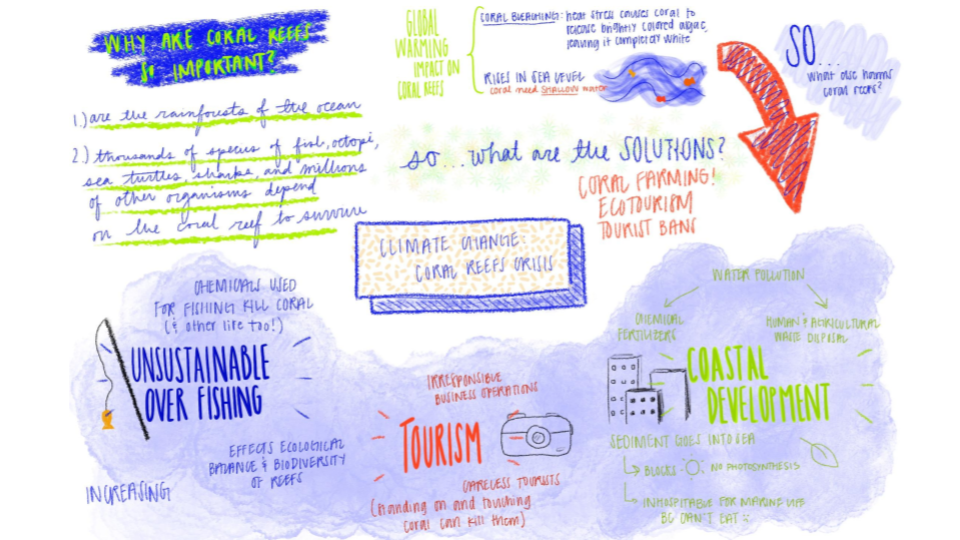
KCS: Using the Weisman’s exhibition, Pressing Issues, as source inspiration, the student designers were asked to think about and respond to pressing issues in their own, contemporary society. What are the insights that you have gleaned from their Gen-Z perspectives?
LS: They care! So much, and about so many things! And they want to use their voices and their future careers to make positive change. If you’ve read their thoughtful concept statements, you’ll know what I mean. There is never a shortage of pressing issues. I think back to when I was in college, feeling stressed out about the state of the world and balancing all the parts of being a college student; but right now, this is a heavy time. Mental health crisis, racism, over consumption, technology waste, environmental degradation, you name it—it all seems to be rapidly accelerating and bearing down on this generation and their future. As anyone paying attention knows, this was an especially heavy semester: passing the one-year mark of the pandemic, the dragging-on of isolation and online school, the Derek Chauvin trial and verdict, at the same time as the murder of Dante Wright and Mahkia Bryant last month. With social media and constant digital connection, I feel like they can’t escape it. It’s so hard for them to take care of themselves. And yet they showed up. They did their work. They were open and wanted to talk about difficult topics. For some, this project was an opportunity to be a little vulnerable. It was also an opportunity to build trust and community as a group. That gave us space to process some of the heaviness in class. Combined with making clothes out of wacky materials, sharing resources with each other, and building confidence in their skills, it also allowed us to find some joy. I think that’s amazing, all things considered.
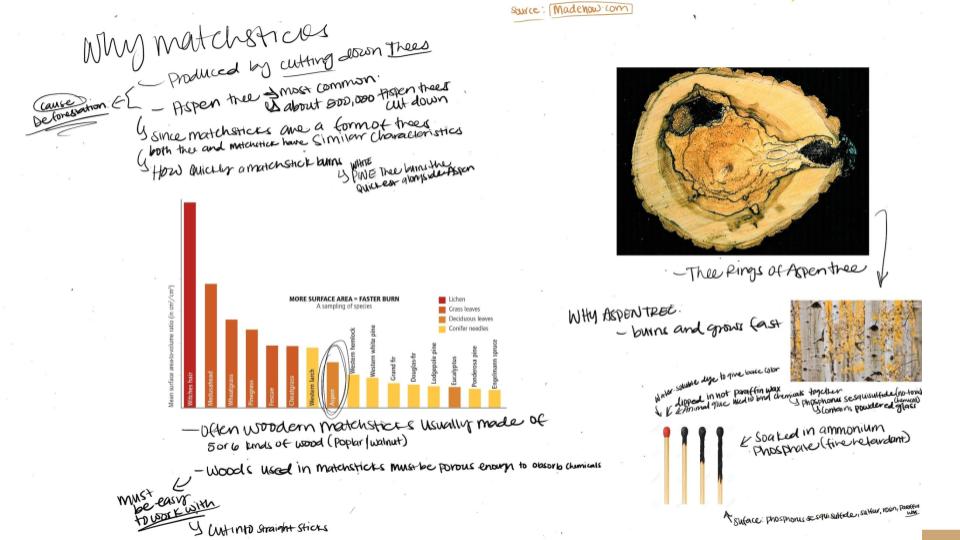
KCS: Historically, designers showcase a new season of work through an in-person runway show. But with COVID restrictions and physical distancing, designers have had to get creative to get their work out to the public, including our own collaboration: moving from a big showcase to a pop-up exhibit. What parts of this new reality would you keep, and what do you miss about the old paradigm?
LS: I am so happy to not be planning a fashion show and dealing with all the logistics and prep this year. It's always such a small window of time to actually view the work the students have done. As you know at the museum, an exhibition—especially for such a conceptual design project–allows the guests to interact, to ponder, and to spend time with the work in a way you can’t at a runway show. There are definitely other interesting ways to evolve from the fashion show, and I do love that the restrictions of right now have gotten us thinking more creatively. I also think, when digital is done well, it is a great complement to in-person events. It opens up a much wider audience so students get to share their work more broadly and for a longer time. It’s great for their portfolios, and incredibly relevant to their future careers.
I do miss the celebratory nature of a fashion show, though—the togetherness, and the build-up to something that feels big and meaningful, as well as the moment of pride that each student feels as their design goes down the runway and they can see audience reactions to their work in real time. And clothing is tactile! I miss the feel, the sounds, the movement of clothes on bodies. I might even miss the rush of last-minute, backstage repairs. You just don’t get that digitally, or when clothes are on mannequins in a peaceful gallery space. In the future, when it’s safe to gather together again, I think we can find other, even more meaningful ways to recreate those feelings. Maybe it could be an opening event, where students bring their loved ones and industry professionals come to meet into the space—to share their hard work and beautiful ideas in person.
KCS: Last question: What do you hope folks take away from the exhibition, and what is one action that we could all take towards supporting a more sustainable apparel ecosystem?
LS: I would love if folks came away inspired to do something about their own pressing issues. What do you care about? What do you want to see changed in our world? These students are using design, but what is your skill, your role to do something about the issues that matter to you?
As for supporting sustainable apparel, my advice is similar to the prompt for this project: Use what you have! Be creative with what you already own, whether that means taking good care of it, altering it to fit you better, re-making it into something new (or hire our apparel design students or alum to do it for you!). When you do need to buy something, you don’t have to spend the most money to get the most sustainably made thing. Just put some thought into it, and try to find something you need, hopefully find joy in, and that you’ll use for a long time.
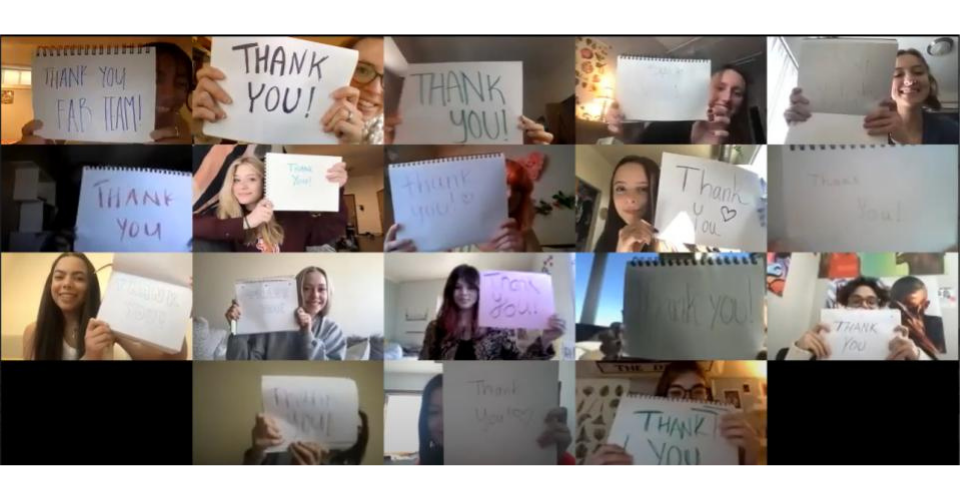
The students of UMN College of Design's "Apparel Design: Studio III" class. Courtesy of Lindsey Strange.
